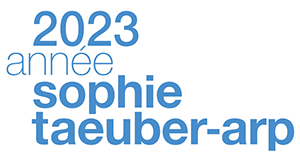
extended until
friday 22th of december
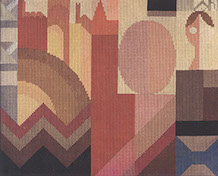
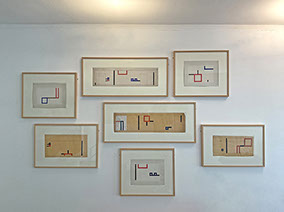
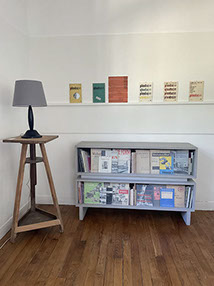
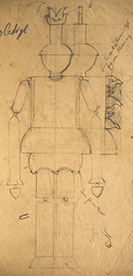

exhibition april 15th to december 10th
fondation arp
Like the work of Sophie Taeuber-Arp, the exhibition aims to show the interpenetration of the arts in the artist’s creation.
Starting point of the work of Sophie Taeuber-Arp through her training, major textile works of different techniques are presented: trousers of costume, cross-stitch embroidery, but also printed silk. To show its way of thinking, studies on millimeter paper are exhibited for the first time.
The textile teaching guide she wrote in 1927 with Blanche Gauchat, for her students at the School of Applied Arts in Zurich, makes it possible to understand that for her, a textile work or a pictorial composition are to think in the same way: a rigorous cutting of a simple form, which is sought to be nuanced by additional lines or coloured contrasts.
The major gouaches presented in counterpoint illustrate this aspect of his thought.
The applied arts are also evoked, especially by the technique of turned wood.
Sophie Taeuber-Arp’s most recognized architectural project was the one she carried out in Strasbourg between 1926 and 1928, in concert with Jean Arp and Theo van Doesburg: the decoration of the Aubette building. Illustrated by some photographs of spaces that she created, it is mainly her projects for the Foyer-bar room that mark this presentation. However wall decoration projects, each of these studies can be individually considered as a work in its own right, highlighting once again this inter-art connection, both architecture and painting.
The other essential point illustrating this theme is, inside this studio-house that she designed in Meudon-Clamart, the furniture that she imagines in a modular way: shelves, drawer furniture, drawing furniture. Another major piece of the collection presents an essential project of 1935: the Goemans gallery desk, in waxed okoumé and wood painted with industrial lacquer, showing the interest of Sophie Taeuber-Arp for the technical advances of the time. Its front is marked by a rigorous tripartite composition, the back panel shows a unique originality: a vertical compartment for large sheets of drawings or architectural plans.
Sophie Taeuber-Arp’s sources of inspiration are in her image: multiple.
Dance is always at the heart of his compositions, it is found in all the works of the exhibition. It is evoked by an iconic photograph of Sophie Taeuber-Arp dancing in 1916-1917 at the Cabaret Voltaire in Zurich, during a Dada performance where she appears costumed and masked.
But it also finds many influences in all forms of art, and a witness of this diversity lies in its library. Several works from this original collection are presented in the exhibition. They are paralleled with certain works, such as a printed silk scarf whose motifs are almost inspired by Brazilian mask lines reproduced in a 1921 book.
His desire to always broaden his spectrum of activity goes beyond a simple love of books, to be interested in a profound editorial work. Between 1937 and 1939, she managed the magazine Plastique, dedicated to the study and appreciation of abstract art. The five issues of this essential review to the history of art are presented.
Less present in its production than other artistic forms, Sophie Taeuber-Arp’s sculpture nevertheless consists of pieces essential to the understanding of 20th century art.
Halfway between the three-dimensional sculpture and the applied arts, his Têtes in turned wood and painted with abstract motifs, and even more his marionnettes for the 1918 play "Le Roi-cerf", of which the fondation arp keeps all the preparatory drawings, show once again that Sophie Taeuber-Arp seeks to break away from artistic categories.

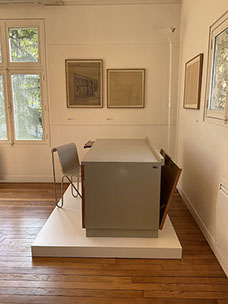
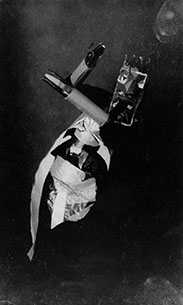
Meudon-Clamart’s studio-house was the residence of an artist couple, not two independent artists. The presence of one was always sensitive in the work of the other. From the moment they met, Sophie Taeuber and Jean Arp produced works signed with their two names.
Sophie’s accidental death in 1943 leaves Jean Arp cut off from his half, on the sentimental as well as artistic level. In the 1950s, he sought to rediscover this creative relationship and used, modified and reinterpreted some of Sophie’s works to invent original creations. Evidence of this is the brass reliefs produced from his last geometric drawings of 1942, or the serigraphy album published in collaboration with the Galerie Denise René and the Galerie d'Art Moderne in Basel in 1957.
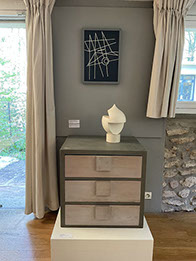
exhibition possible thanks to the support
of the ministère de la Culture
Direction régionale des affaires culturelles d’Île-de-France
of the Association des Amis de Sophie Taeuber
et de Jean Arp
of the ville de Meudon,
by a loan from the Musée d’Art et d’Histoire

